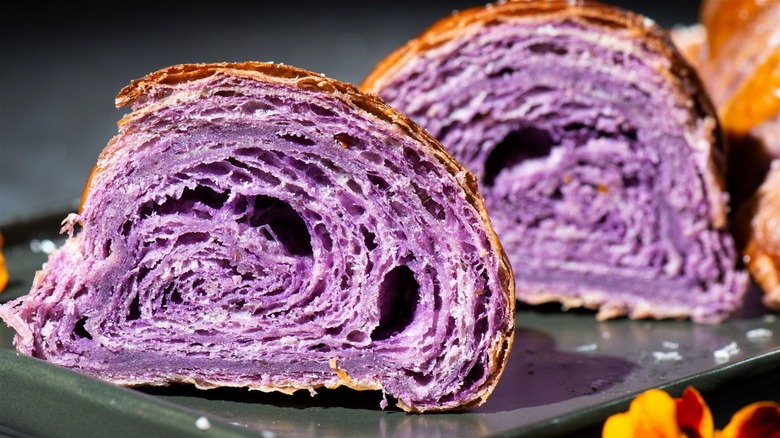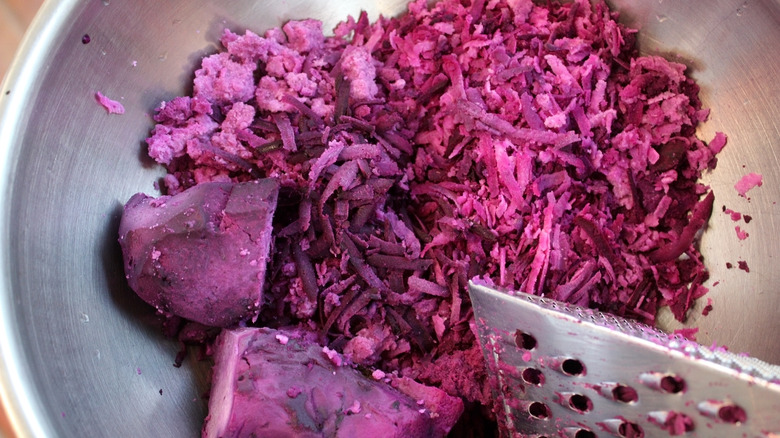Patience Is A Virtue When Cooking With Ube
Ube is becoming increasingly trendy in the U.S., not only for its vivid purple color but for its sweet, slightly nutty flavor that works perfectly in both dessert and savory dishes. But what about ube itself? Some foodies may know it's a great additive, but ube has plenty to offer on its own and can be enjoyed closer to its base form as a starchy tuber, similar to taro root. And just like when you cook tubers such as yams and potatoes, patience is a virtue when cooking ube, as coaxing out its best flavor and texture takes time.
Tuber and root vegetables come in many shapes and sizes, but they generally share one major trait: They aren't easy to eat raw, or even partially cooked. You have to thoroughly break down these foods' starchy composition to make them easier to eat and digest, which is why raw ube needs to be boiled, steamed, or roasted first — processes that take up to 30 minutes. Furthermore, raw ube is toxic, so it's essential to cook it well before adding it to a recipe. Once ube is cooked, however, it's an ideal ingredient for many culinary applications.
How to cook with ube
In the Philippines, where ube is commonly grown, one of the tuber's most prevalent uses is in a paste called ube halaya. This food is made by grating or mashing boiled ube flesh before mixing it with milk, coconut milk, or condensed milk and other sweeteners. At this stage, ube halaya can be eaten by itself or added to other recipes to provide ube flavor. This process may sound time-consuming, but the resulting color and flavor demonstrate how rewarding your patience can be when cooking ube-based dishes. Ube halaya's sweet flavor is best showcased in ice cream or Filipino desserts like halo-halo.
Ube halaya can also be altered so it's more suitable for baking. To make it a more controlled variable in baking recipes, make the ube halaya with minimal ingredients: water, sugar, and ube. From there, you can add it to any of your favorites, from brownies to sweet buns to cakes. Guests will be amazed by how you achieved such well-balanced dishes with striking, violet colors.

